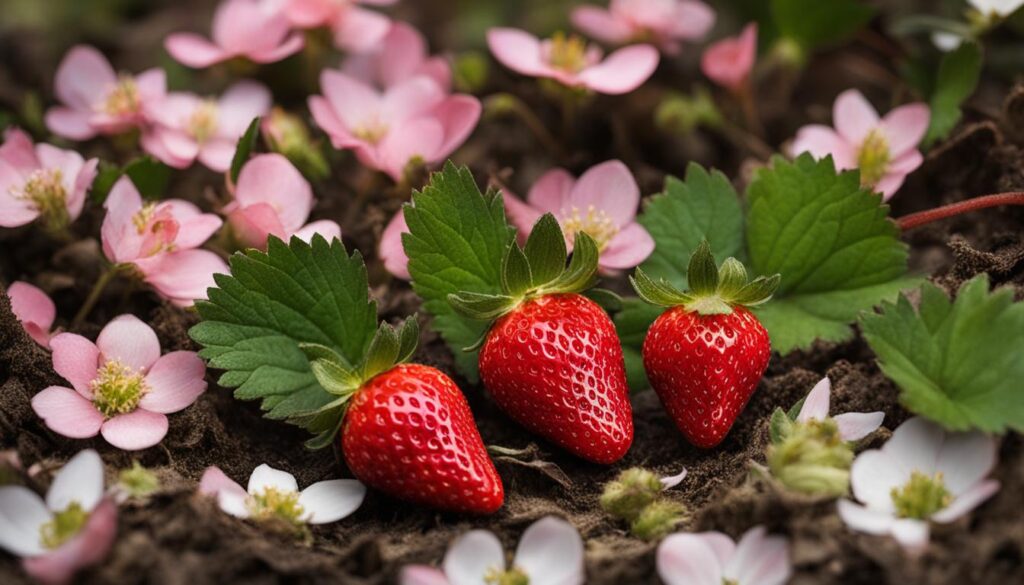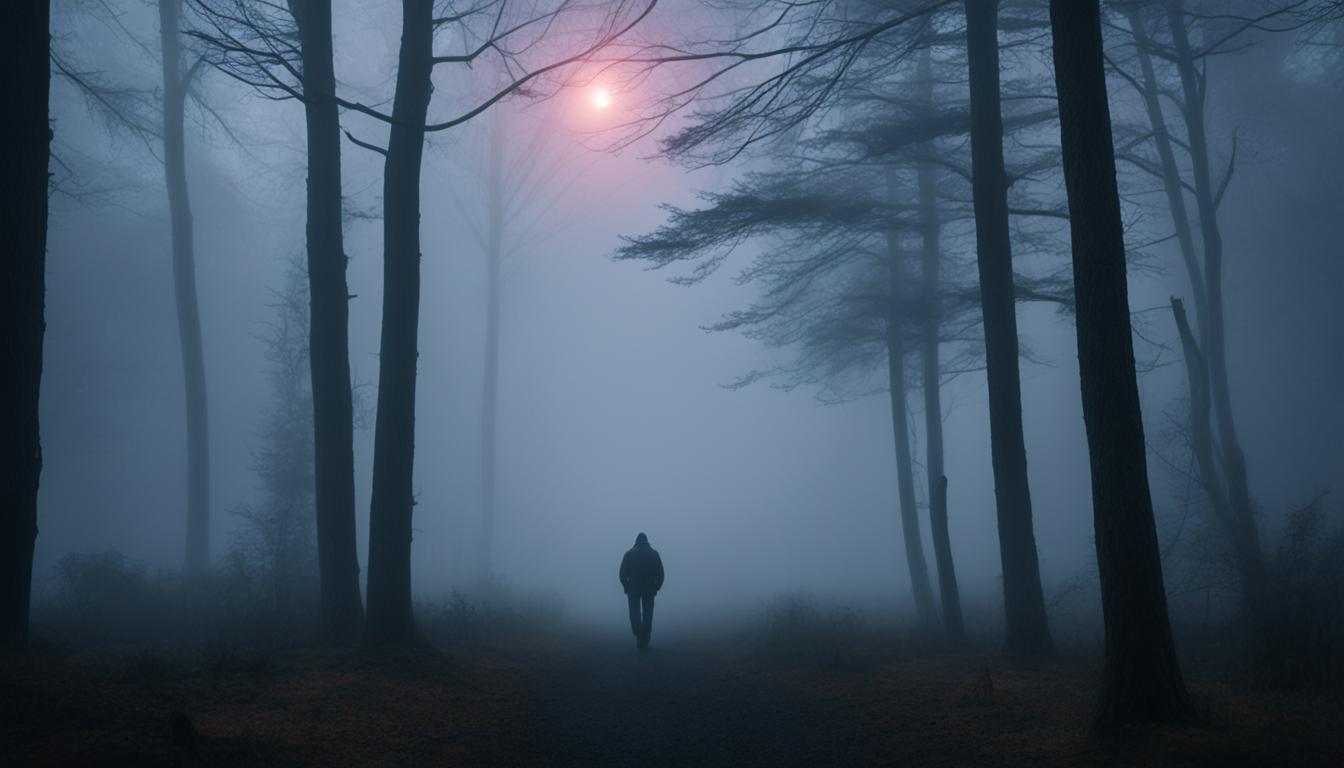Stephen King is a master of horror fiction, best known for his chilling tales that keep readers up at night. One of his most intriguing works is “Strawberry Spring,” a haunting narrative that explores the illusory beauty of spring and the darkness that lurks beneath the surface. In this article, we will delve into the world of “Strawberry Spring” and examine the unique setting, complex characters, and twisted plot that make it a captivating read. Join us as we explore the impact and legacy of this chilling tale in the horror fiction genre and gain insights into Stephen King’s writing style and literary techniques.
About Stephen King
Stephen King is a highly acclaimed author recognized for his influential contributions to the horror fiction genre. King’s unique and masterful storytelling techniques have captured the hearts and minds of countless readers worldwide for decades. Born in Portland, Maine in 1947, King began his writing career as a teenager, submitting short stories to various magazines. His first major breakthrough came with the publication of his novel “Carrie” in 1974, followed by other successful works such as “The Shining”, “It”, and “Pet Sematary”.
King has been recognized with numerous prestigious awards for his contributions to the literary world, including the National Medal of Arts and induction into the American Academy of Arts and Letters. His novels and short stories continue to captivate audiences with their gripping plots, complex characterization, and exploration of profound themes such as the dark side of human nature and the fragility of sanity. King’s influence on the horror fiction genre cannot be overstated, and his legacy as a master storyteller is sure to endure for generations to come.
Introduction to “Strawberry Spring”
Stephen King’s “Strawberry Spring” is a haunting tale that takes place in New Sharon University. The story is set in Maine and revolves around the infamous Strawberry Spring, a weather phenomenon that occurs during the spring season, causing an inexplicable warm breeze to sweep across the campus.
The synopsis of the story follows a series of gruesome murders that are committed during the Strawberry Spring. As the killings continue, paranoia and fear grip the campus, and the identity of the killer remains a mystery lurking in the shadows.
The unique setting of New Sharon University featuring its picturesque landscape and the romanticized notion of spring draws a stark contrast to the violent murders that take place in the story. Stephen King’s skilled use of setting creates an eerie and unsettling atmosphere, adding depth to the narrative.
The Strawberry Spring, which seems beautiful and serene at first glance, conceals the darker elements of the story, creating an ominous illusion of peace and tranquility. The duality of the setting serves as a metaphor for the human psyche and the potential for hidden darkness lurking beneath the surface.
As we delve into the world of “Strawberry Spring,” we are introduced to a sinister and chilling narrative that unfolds amidst a seemingly idyllic setting, leaving readers both captivated and disturbed.
The Illusion of Spring
In “Strawberry Spring,” Stephen King masterfully creates an atmospheric illusion with the deceptive spring. Though the season brings to mind warmth and beauty, the spring is far from what it seems.
Under the captivating exterior resides a sinister truth, which King slowly unveils throughout the story. The contrast between the illusion and reality creates an eerie, chilling effect that keeps readers on edge.

The atmosphere King generates with the deceptive spring creates a sense of unease as readers realize that looks can be deceiving. As the narrative continues to build on this central theme, the illusion of the spring gradually dissipates, revealing the unsettling truths that lie beneath.
The Characters of “Strawberry Spring”
The complex and fascinating characters in “Strawberry Spring” bring the story to life, with each one contributing to the suspense and intrigue woven into the narrative by Stephen King.
The protagonist, a student named Jack, is haunted by his past and struggles to reconcile his identity with his present reality. His mysterious and enigmatic demeanor adds to the atmosphere of the story, leaving readers guessing until the very end.
The supporting characters in the story are equally compelling, with no two characters being alike. From the eccentric professor to the withdrawn janitor, each character is uniquely crafted, with their personality traits and personal demons fleshed out in detail.
The character development in “Strawberry Spring” is exceptional, building tension and adding depth to the story as each character’s hidden darkness is slowly revealed. Stephen King masterfully weaves themes of identity, trauma, and the human psyche into their development, leaving readers unnerved long after the story’s conclusion.
The table below provides a brief overview of the main characters in “Strawberry Spring” and their defining traits.
| Name | Personality Traits |
|---|---|
| Jack | Mysterious, haunted, brooding |
| The Professor | Eccentric, brilliant, reclusive |
| The Janitor | Withdrawn, enigmatic, troubled |
| The Reporter | Driven, ambitious, inquisitive |
The combination of intricate character development and a suspenseful plot makes “Strawberry Spring” a must-read for fans of psychological horror and Stephen King’s works.
Unmasking the Mystery
Stephen King’s “Strawberry Spring” is a masterclass in mystery, suspense, and plot twists. The narrative expertly weaves an intricate web of intrigue around the reader, leaving them guessing and anticipating each new revelation.
The character of the narrator is particularly intriguing, as their own insecurities and doubts are intertwined with the unfolding mystery. King plays with the reader’s perceptions and emotions, creating a sense of unease that permeates every page.
With each new twist and revelation, the stakes are raised, and the reader is left wondering what will happen next. The psychological suspense builds steadily throughout the story, culminating in a shocking finale that leaves a lasting impression.
Kristen Page-Kirby of The Washington Post praised King’s ability to keep readers engaged: “By the last page, as with all healthy mysteries, the answers will be revealed; but it’s the journey there, the clues and conjectures that will keep readers fingernail-biting and gasping until the end.”
Themes Explored in “Strawberry Spring”
Stephen King’s “Strawberry Spring” delves into profound themes that add depth and psychological horror to the narrative. One of the key themes explored in this chilling tale is illusion. The deceptive spring creates an illusory sense of warmth and beauty that conceals the darker elements, highlighting the illusory nature of appearances.
Another theme explored in “Strawberry Spring” is identity. Throughout the narrative, King weaves a theme of hidden darkness and duality of human nature, creating a sense of mystery and intrigue amongst the characters.
The use of symbolism is also prominent in King’s masterpiece. The deceptive spring is a striking example as it means something different to each of the characters. This creates a level of mystery and suspense throughout the narrative.
The powerful psychological horror of “Strawberry Spring” emerges from the captivating exploration of these themes, prompting us to question our own sense of identity and the authenticity of our perceptions.
Symbolism Example – The Deceptive Spring:
King uses the spring in “Strawberry Spring” as a symbol of illusion and deceit. The seasonal changes create a sense of punch that the residents eagerly await. However, with the onset of spring, the veil of illusion lifts to reveal the horrors lurking underneath.

Stephen King’s Writing Style
Stephen King’s writing style is renowned for its ability to captivate readers and create a chilling and immersive atmosphere. His works, including “Strawberry Spring,” are characterized by their vivid descriptions, masterful pacing, and use of literary techniques.
One of King’s most notable writing techniques is his use of symbolism to enrich the narrative and convey deeper meanings. In “Strawberry Spring,” the deceptive spring serves as a symbol of illusion and the duality of human nature.
King also uses foreshadowing and plot twists to keep readers on the edge of their seats and create a sense of suspense throughout the story. As the mystery unfolds, twists and turns keep the audience guessing until the very end.
Furthermore, King’s seamless interweaving of the psychological and supernatural realms adds a layer of complexity to his works, heightening the terror and making them truly unforgettable.
Impact and Legacy of “Strawberry Spring”
Since its publication in the late 1970s, “Strawberry Spring” has left a lasting impact on Stephen King’s works and the horror fiction genre. The tale’s immersive atmosphere, multi-layered characters, and profound themes have secured its place among King’s most haunting and influential works.
The legacy of “Strawberry Spring” can be traced in later works such as “The Outsider” and “Joyland,” which employ similar storytelling techniques and themes of duality and hidden darkness. The tale’s impact is also evident in the works of other horror writers who take inspiration from King’s masterful storytelling.
The enduring legacy of “Strawberry Spring” lies in its ability to terrify and captivate readers decades after its initial publication. Its influence on the horror fiction genre is undeniable, shaping the way for future generations of writers to explore similar themes and techniques in their works.
Critical Reception of “Strawberry Spring”
Since its publication, “Strawberry Spring” has garnered critical acclaim for its atmospheric and suspenseful storytelling. Critics have praised Stephen King’s ability to create a haunting and complex tale that resonates with readers.
According to Publishers Weekly, “Strawberry Spring” is a “taut, suspenseful thriller” that showcases King’s “acutely observed characters and masterful storytelling.” The novel has also received positive reviews from readers on platforms such as Goodreads, with many describing it as a “gripping” and “spine-chilling” page-turner.
The novel’s analysis reveals how King expertly weaves together themes of illusion, identity, and psychological horror to create a truly haunting atmosphere. The illusory sense of warmth in the misleading spring, the duality of characters, and the masterful use of plot twists and mystery have all been commended by critics and readers alike.
Critical Reception of “Strawberry Spring”
| Publication | Review |
|---|---|
| Publishers Weekly | “King’s acutely observed characters and masterful storytelling” |
| Goodreads reader reviews | “a gripping page-turner” |
| Booklist | “haunting and complex” |
Overall, “Strawberry Spring” has cemented its place as a standout novel in Stephen King’s impressive career, and its critical reception underscores the power and lasting impact of his storytelling.
Similar Works by Stephen King
Stephen King’s writing explores the depths of human psychology with a focus on horror and suspense. If you enjoyed “Strawberry Spring,” then you may want to check out some of King’s other works that share similar themes and storytelling techniques.
| Title | Year Published | Summary |
|---|---|---|
| The Shining | 1977 | This bestselling novel follows the story of Jack Torrance, who takes a job as a caretaker at the Overlook Hotel. As the snow begins to fall and isolation sets in, Jack begins to unravel, and the hotel’s dark secrets start to reveal themselves. |
| It | 1986 | Pennywise the Dancing Clown terrorizes the small town of Derry, Maine, in this epic novel that spans over two decades. A group of childhood friends reunite to confront the evil entity and put an end to its reign of terror. |
| Cujo | 1981 | A friendly St. Bernard named Cujo is bitten by a rabid bat, and his behavior takes a violent turn. As the small town is besieged by a heatwave, Donna Trenton and her son Tad become trapped inside their car, with Cujo waiting outside. |
If you prefer shorter stories, King’s short story collections such as “Night Shift” and “Skeleton Crew” offer a diverse range of unsettling tales.
Readers looking for more horror fiction can also explore the works of Edgar Allan Poe, H.P. Lovecraft, and Shirley Jackson, who have all influenced Stephen King’s writing.
Conclusion
Stephen King’s “Strawberry Spring” is a haunting and chilling tale that showcases his masterful storytelling and unique writing style. Through its illusory atmosphere, complex characters, and profound themes, King explores the duality of human nature and the hidden darkness that lies within us.
As one of his earlier works, “Strawberry Spring” has left an enduring impact on his later works and the horror fiction genre as a whole. The critical reception of the novella has been overwhelmingly positive, with readers and critics praising King’s ability to create an immersive and terrifying atmosphere.
Overall, “Strawberry Spring” is a must-read for fans of Stephen King and the horror fiction genre, offering a riveting and thought-provoking narrative that is both unsettling and captivating.



